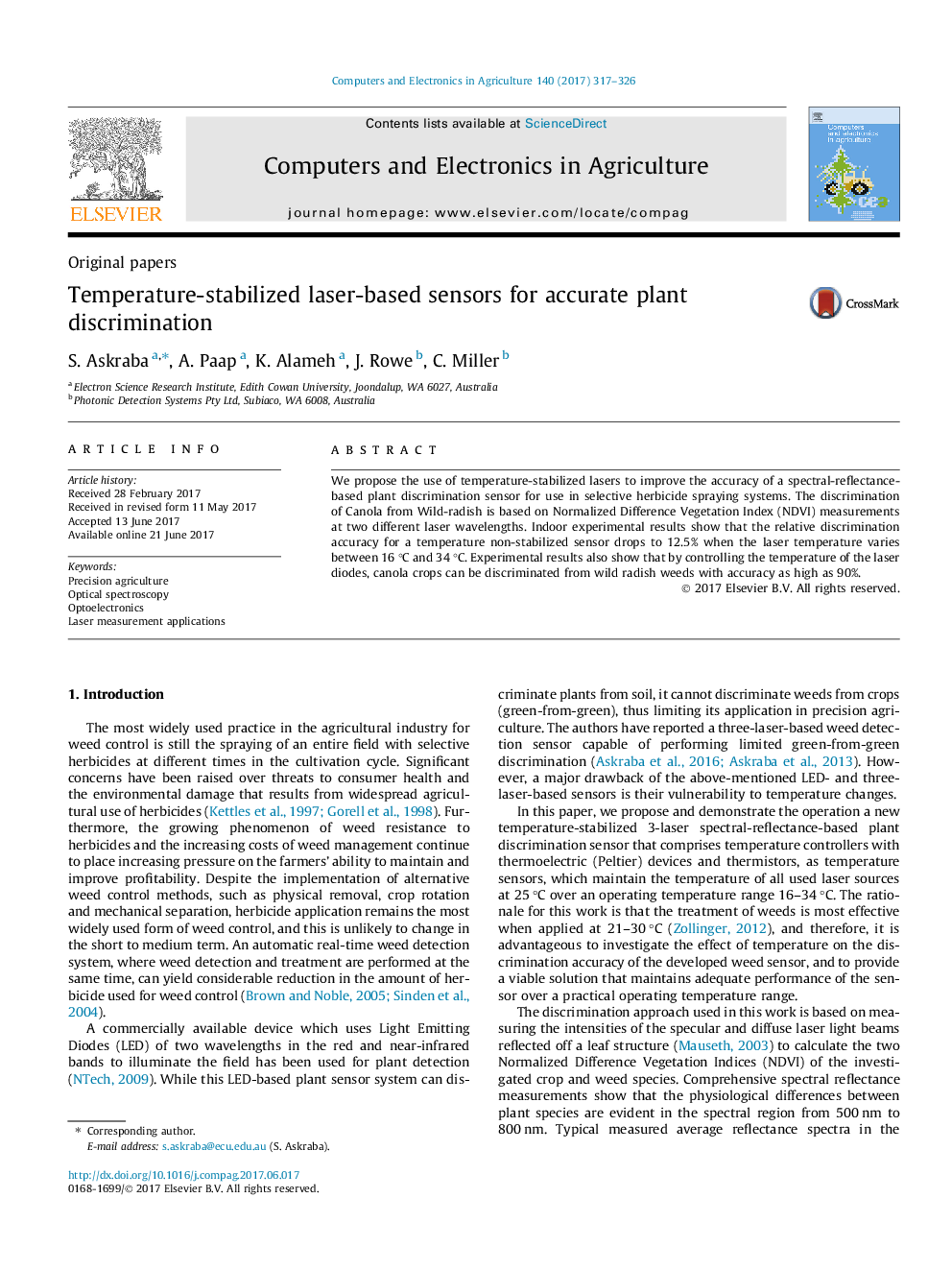| Article ID | Journal | Published Year | Pages | File Type |
|---|---|---|---|---|
| 6458612 | Computers and Electronics in Agriculture | 2017 | 10 Pages |
â¢Further improvement of a novel spectral-reflectance-based plant discrimination sensor for use in selective herbicide spot spraying systems is described.â¢To maintain high discrimination accuracy over the practical temperature range 16-34 °C a temperature-stabilized laser-based three-waveband plant discrimination sensor has been developed and tested indoor on Canola and Wild Radish leaves.â¢Experimental results show that by controlling the temperature of the laser diodes, canola crops can be discriminated from wild radish weeds, which is a dominant weed in the canola crop field, with accuracy as high as 90% and traveling speed of about 7.5 km/h.
We propose the use of temperature-stabilized lasers to improve the accuracy of a spectral-reflectance-based plant discrimination sensor for use in selective herbicide spraying systems. The discrimination of Canola from Wild-radish is based on Normalized Difference Vegetation Index (NDVI) measurements at two different laser wavelengths. Indoor experimental results show that the relative discrimination accuracy for a temperature non-stabilized sensor drops to 12.5% when the laser temperature varies between 16 °C and 34 °C. Experimental results also show that by controlling the temperature of the laser diodes, canola crops can be discriminated from wild radish weeds with accuracy as high as 90%.
